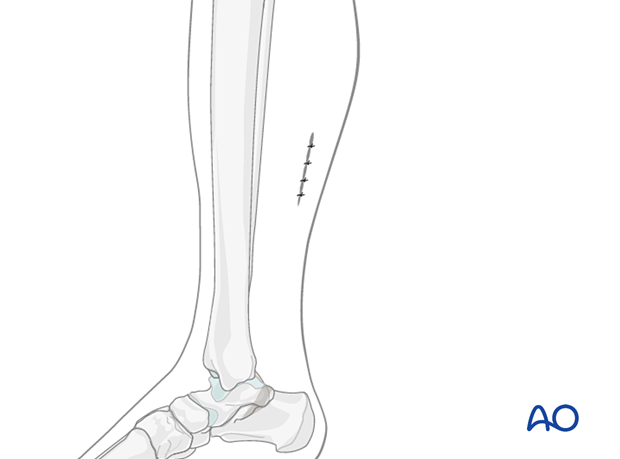Release of the gastrocnemius equinus
1. Introduction
Gastrocnemius equinus is a common condition resulting in increased bending stresses across the midfoot and metatarsals.
Release of the gastrocnemius tendon will decrease this stress postoperatively.
2. Incision and deep dissection
Identify the musculotendon junction of the gastrocnemius tendon and perform a medial 3 cm skin incision centered over the junction.
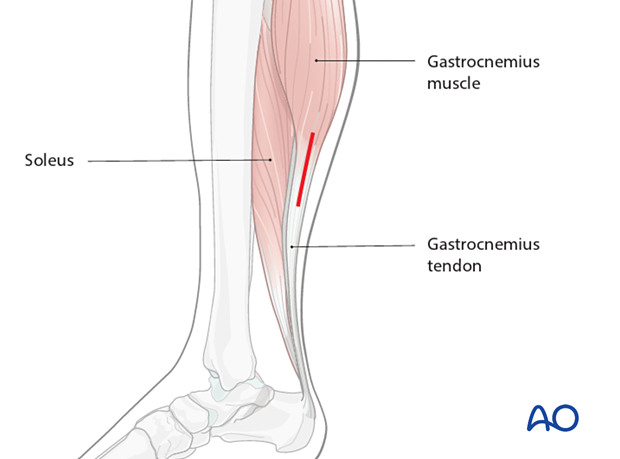
Dissect subcutaneously down to the crural facia and divide the fascia longitudinally.
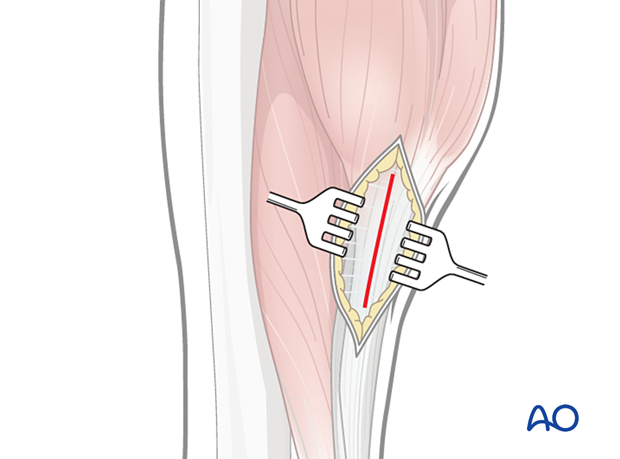
3. Release
Isolate the gastrocnemius tendon from the soleus muscle anteriorly and the subcutaneous tissues and carefully protect the sural nerve posteriorly.
Cut the fascia overlying the gastrocnemius, leaving the tendon intact.
Assess if adequate dorsiflexion of the ankle has been obtained.
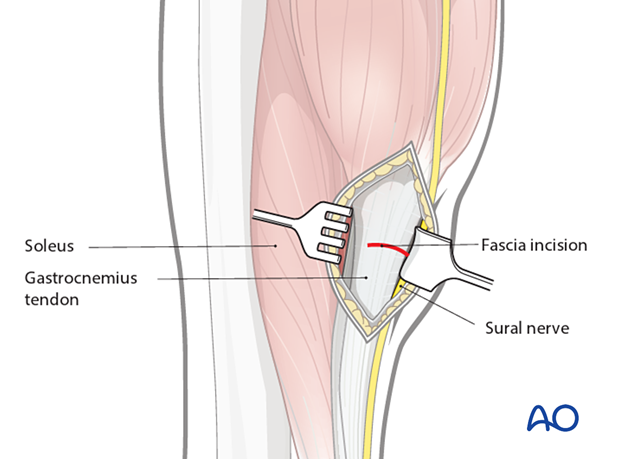
If necessary, to achieve more length, the tendon can be incised transversely, partially across the medial aspect of the tendon and then partially across the lateral aspect of the tendon.
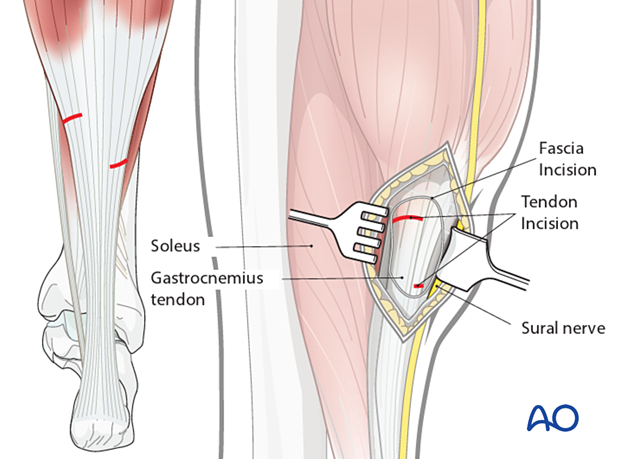
4. Closure
Irrigate the wound and close the fascia with interrupted resorbable sutures. Close the skin.
Apply dressing and apply splint in neutral or slight dorsiflexion of the ankle for a minimum of four weeks. After sutures are removed at two weeks, a removable orthosis may be used.
